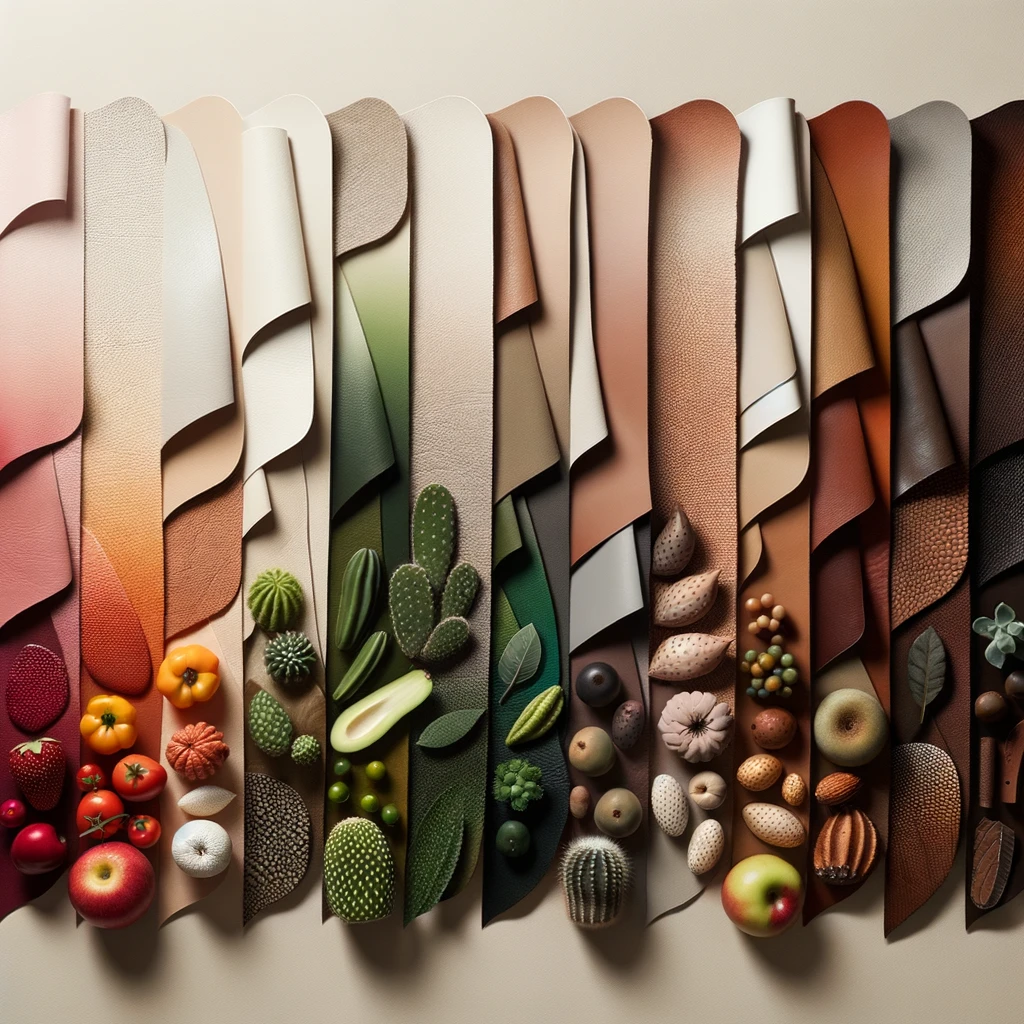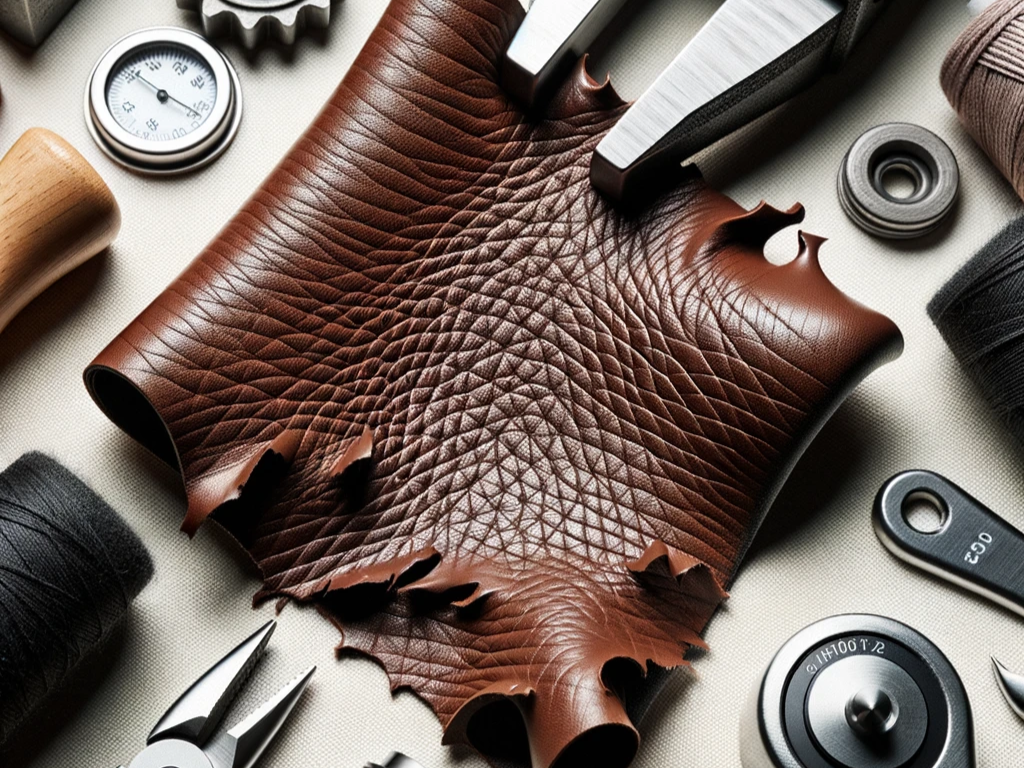
Your Complete Guide to Vegan Leather Types: From Faux to PU to Plant-Based
|
|
Time to read 10 min
|
|
Time to read 10 min
When it comes to making ethical and sustainable fashion choices, the term "vegan leather" often pops up as a buzzword. But what exactly is vegan leather, and what are the different types of vegan leather available in the market? Understanding these variants is crucial, especially if you're committed to a lifestyle that values both aesthetics and ethics. In this comprehensive guide and blog, we'll break down everything you need to know about these fascinating materials that are changing the fashion game for the better.
The world of non-animal or vegan leather can be a little confusing, especially with terms like "faux leather," "pleather," and "fake leather" being thrown around. Alongside vegan leather all of these terms are used to describe materials that mimic animal leather without involving any animal cruelty – i.e. a non-animal, fake, or vegan leather! Although they may be typically used to describe one subcategory of vegan leathers (e.g. Pleather generally refers to plastic or synthetic leathers) they are essentially interchangeable.
A good rule of thumb is that companies will use generic terms like Faux Leather if they are selling a generic, usually synthetic, material (e.g. PU Leather). However, like Rahui London, they will use specific terms like plant-based vegan leather, or Apple Leather, if they are using more innovative and sustainable material. It always pays to dig a bit deeper as not all vegan leathers are created equal!
By definition Leather is a material made from tanned animal skin. And a Vegan product is one that contains no animal products. So on the face of it the answer is simple! However times change, and much like how 'milk' now encompasses a wide variety of plant-based options like oat milk and coconut milk, the term 'leather' has grown beyond animal hide. Vegan leather offers a myriad of textures with the look, feel, and characteristics of traditional animal leather but with a modern, ethical twist that's shaking up the fashion realm.
Choosing vegan leather over traditional animal leather can have significant environmental and ethical benefits. The animals that traditional leather comes from are either farmed for their hide or their hides are obtained as a co-product of the meat industry - so switching to vegan leather helps reduce the demand for animal hides, thus decreasing animal cruelty and the significant environmental impact and carbon footprint of this industry. Plus, with advancements in technology, vegan leather can now match, if not surpass, the quality, durability, and aesthetic appeal of traditional leather.

When it comes to types, vegan leathers fall into two broad categories, Synthetic and Plant-Based:
Synthetic leathers, such as PVC and PU leather, are made from petroleum-based products. While they've been a popular choice due to their durability and resemblance to real leather, they're not the most eco-friendly option given their non-biodegradable nature and the pollution caused during their production. However they can be cheaper and represent a more ethical option than animal leather.
Plant-based Leathers are crafted from a variety of natural sources like cactus, pineapple leaf, and even apples. Some of these materials are made purely from plant materials and some are plant material coated or mixed with a synthetic material. As plant-based leathers are derived from natural sources like fruits or plants they're typically more sustainable, biodegradable, and have a lower environmental impact.
"What is plant-based leather?" you may ask. Plant-based leather is made from plant materials and is designed to be a more sustainable alternative to both animal leather and synthetic petrochemical-based options. So, when someone asks, "What is plant-based leather?" you can say it's an innovative, eco-friendly material made directly from plant fibers.
Differentiating between the types of vegan leather isn't just for the sake of knowledge. It has real-world applications that can significantly impact your lifestyle choices. Whether you're scouting for a stylish and sustinable material for your next handbag or you're committed to making more eco-friendly choices, understanding these categories can be a game-changer. It empowers you to align your purchases with your values, be it sustainability, animal welfare, or innovation.
Polyurethane (PU) leather is one of the most common types of synthetic leather. It's flexible, durable, and has a similar feel to real leather. It's also water-resistant and easy to clean, making it a practical choice for many items. Unlike its synthetic counterpart PVC leather, it doesn't release highly toxic dioxins, making it a safer synthetic option.
PU leather is widely used in the fashion industry to make jackets, shoes, handbags, and accessories. It's also used in furniture upholstery due to its durability and resistance to wear and tear.

Cactus leather, like that produced by Desserto, is a sustainable and innovative form of vegan leather. It's made from mature leaves of cactus plants without harming the plant, and does not require any harmful chemicals for processing. Cactus leather is biodegradable, breathable, and has a high tensile strength.
With its elegant look and soft texture, cactus leather is increasingly being used in high-end fashion. You'll find it in products like handbags, wallets, shoes, and even car interiors. Rahui London uses Cactus leather in some of its collections.
Apple leather is a novel form of vegan leather made from the waste generated during apple juice production. It's a sustainable choice as it utilises waste that would otherwise be discarded. Apple leather is durable, UV-resistant, and has a smooth finish.
Apple leather is gaining popularity in the fashion industry due to its high quality and sustainability. It's used in the production of bags, shoes, and accessories. Its unique origin also makes it a conversation starter! Rahui London uses an Apple Leather called Apple Skin for several of its products due to its sustainability and performance characteristics.

Pineapple leather, also known as Piñatex, is made from the waste fibers of pineapple leaves. It's a byproduct of the pineapple harvest, so no additional resources are needed to produce it. Pineapple leather is strong, versatile, and lightweight, and it provides a good source of income for farming communities.
Pineapple leather is popular in the fashion industry and is used to create shoes, bags, wallets, and upholstery. Its unique texture gives a natural and exotic appeal to the end products. Rahui London uses Pineapple leather in some of its collections.

One of the most exciting aspects of vegan leather is its rapidly evolving landscape. New materials and manufacturing techniques are being developed, making this an ever-changing field ripe for innovation. Whether it's lab-grown leather made from fungi or cutting-edge synthetics that reduce carbon footprints, the world of vegan leather is a space to watch.
The environmental impact of vegan leather depends largely on the materials and processes used. Plant-based leathers, which utilise agricultural byproducts and require less energy to produce, generally have a lower carbon footprint than their synthetic counterparts. However, some forms of vegan leather still use a polyurethane coating or backing, which reduces their biodegradability.
While vegan leather items can have a long lifespan with proper care, they will eventually need to be disposed of. Some types of vegan leather, such as plant-based leathers, are biodegradable and can be composted at the end of their life cycle. However, others may contain synthetic components that require specialised recycling processes. It's important to research and follow the recommended disposal methods for each type of vegan leather to minimise environmental impact.

When choosing vegan leather, consider the quality and durability of the material. Look for well-constructed items that are made with high-quality vegan leather. Pay attention to stitching, hardware, and overall craftsmanship to ensure that your item will stand the test of time.

Vegan leather comes in a wide range of textures, colours, and finishes. Consider your personal style and preferences when selecting a vegan leather item. Whether you prefer a classic black handbag or a vibrant colored jacket, there's a vegan leather option to suit your taste.

To keep your vegan leather items looking their best, it's important to follow proper cleaning and maintenance techniques. Most vegan leathers can be cleaned with a damp cloth and mild soap. Avoid using harsh chemicals or abrasive cleaners that can damage the material. Regularly moisturise your vegan leather items with a specialised conditioner to prevent drying and cracking.
Understanding the different types of vegan leathers isn't just a fashion statement; it's a lifestyle choice. With an array of options like PU leather, cactus leather, pineapple leather, and apple leather, you are sure to find a vegan leather type that aligns with your values and style. The more you know, the better decisions you can make that align with your ethical and aesthetic values. By choosing vegan leather, you're not only making a fashion statement, but also contributing to a more sustainable and compassionate future.
So, why stop here? Immerse yourself in our in-depth articles and material profiles to explore each type of vegan leather in detail.
Share The Love
